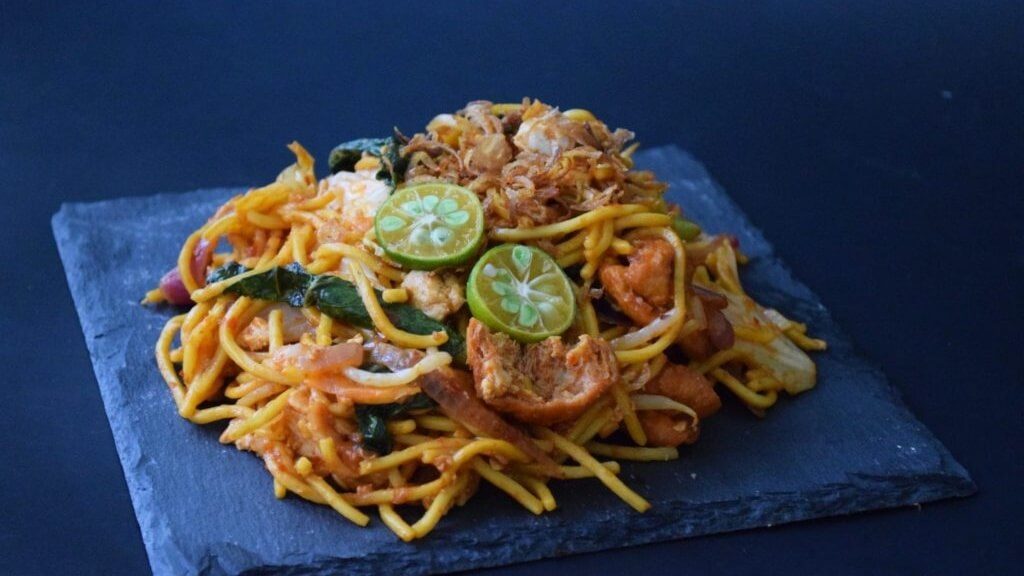Ah, the Mamak. The quintessential Malaysian experience. A term used to address a Tamil uncle, “Mamak” also refers to an open-air cafe concept that the Indian Muslim community have established here. Building structures range from brick-and-mortar to practically a few metal poles and a corrugated roof. These cafes are on the other side of the experience spectrum from fine dining. It can get gaudy, grimey, and have waiters shouting orders across tables. But who cares when so many of these cafes boast 24-hour opening times, rock-bottom prices, and some of the tastiest grub the country has to offer?
Amongst the incredible variety of flatbreads offered at most mamaks is the standard fried rice and noodle fare. For noodles, you can typically pick between three types: beehoon (rice vermicelli), kuey teow (flat rice noodles) or mee kuning (yellow-coloured wheat noodles). And how to judge the greatness of a mamak cafe’s food is, more than we probably realize, based on their interpretation of Mee Goreng.
As one of the most accessible dishes across the country, a plate of Mamak-style stir-fried mee, known here as Mee Goreng Mamak, seems quite standard in appearances. But depending on where you go, a plate can be mildly spicy or volcano hot, be sticky dry or oozing with gravy, have dough fritters or no fritters.
What can be agreed upon is that we don’t always know what goes inside it. Perhaps from your table, the mamak cook can be seen chucking in this sauce and that sauce, obscure pastes here and there, and most likely plenty of oil.
As much as I know that it’s easy to head to a mamak and have a Mee Goreng served to my table in minutes, that relinquishes my right to know what exactly goes into my food. I also know that there are many Malaysians living around the world who don’t have that privilege of having access to a mamak at all. So this recipe especially goes out to my homies abroad!
For my version, I have tried to strike a balance between dry and saucy, mildly spicy, not too oily, and without the usual egg fried into it. I have included some fresh local produce that is typically used in this dish. However, feel free to experiment with vegetables that are local to your area.
Fresh homemade mee kuning gets its colour from the traditional use of egg. Nowadays, you can buy mass-produced mee in a packet and without egg as an ingredient. It is made yellow with food colouring instead. Pre-cooked mee in packets also comes with preservatives. I am aware that this is not the healthiest choice and not ideal for those who want to stay away from chemicals in their food. For this reason, I only cook with these kind of noodles on very rare occasions. But you are more than welcome to try other kinds of noodles for this recipe. Alternatives would work for those who don’t have access to this type of yellow mee anyway. Even leftover spaghetti would work!
There may be different strengths of chili pastes out there, depending on who manufactured them. If you have a chili paste that is a staple in your kitchen then you would be familiar with how much to use for your own preference. For me, two tablespoons is enough for the brand I use. You can use as much or as little as you wish, or even not at all.
The fried shallots can be bought pre-fried, or if you have the patience, you can fry them yourself… chopped finely and shallow fried in oil for at least 10 minutes or until brown. Although this is an optional ingredient, adding fried onions to your noodles can make quite a difference.
After the dish has been cooked, leftover noodles may continue to absorb the sauces, creating a stickier mouthfeel. When re-heating, feel free to add a little bit of water to moisten it again. I highly recommend leftovers to be consumed the next day at the latest. Saucy noodles don’t last too long!
May you enjoy cooking this for your foodie friends, and indulge in a signature mamak experience wherever you are in the world.
[amd-zlrecipe-recipe:170]This recipe was republished with permission from Davina Da Vegan.


